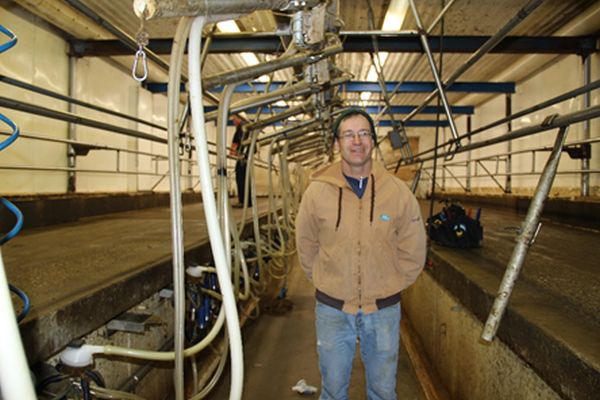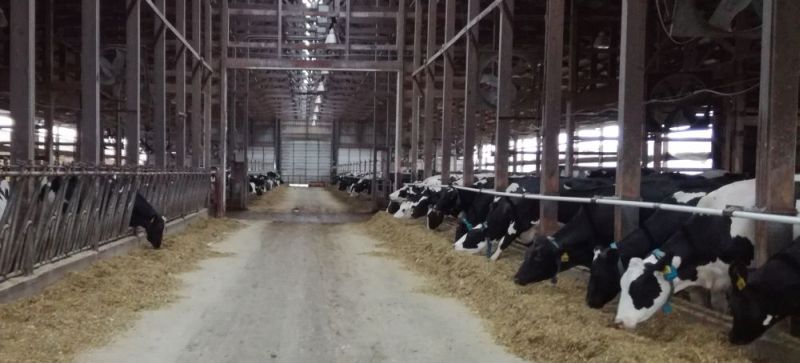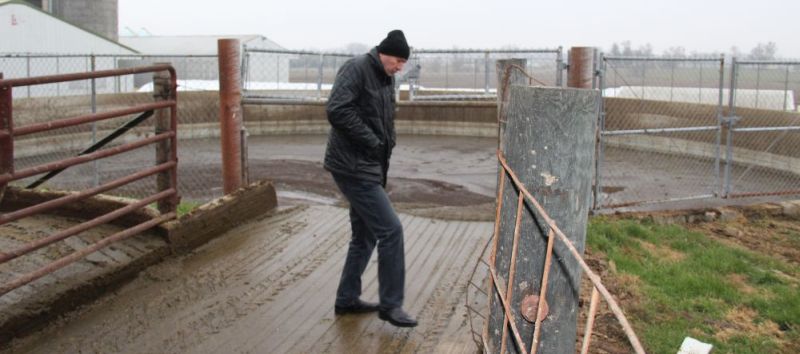Schanbacher dairy farm
Newhall, Iowa
A typical family farm, where the milk business goes from generation to generation and evolves.
Milk production was started by grandfather of the current owner of the farm Jay Schanbacher in 1938. When Jay joined the family business in 1995, 65 cows were milked on the farm.
From that time the herd was constantly growing by means of own reproduction, built and now they have 315 cows (dairy herd is 270 cows) and 270 heifers. They don't expand over a year because barns are on their full capacity.
They cultivate 364 hectares of land.
The farm has 3 full-time employees, a farmer, 6 students for part-time employment and parents.
Milking, productivity, margin
Cows are milked twice a day; daily productivity is 38.6 kg per cow.
They use a milking parlour «swing» for 40 cows. On both sides of the milking pit 20 cows stand. They are prepared for milking and milking machines are connected (4 cows). As soon as milking is finished, one side will roll over to the second one. 120−140 cows can be milked for an hour in such milking parlour.

Swing milking parlour 2×20. Capacity — up to 140 cows per hour.
The farm is a member of the DFA Cooperative and is part of the Dairy Herd Improvement Association (DHIA). The Association conducts control milking once a month. Provides PCDART software for accounting and management. The Association does not advise, but only collects and provides information. The membership fee is $600 per month for this farm size.
Health and Reproduction
The level of culling and the introduction of young stock into the herd is 30%; may even reach 40%, because barns are full.
The period of voluntary waiting is 70 days, calving interval is 13 months. Use only artificial insemination. The level of fertility of cows is 42%, heifers — 65%.
Blood tests are used for checking the pregnancy on the 30th day after insemination and on the 60th day after insemination to confirm the pregnancy, as approximately 10% of the cows lose the embryo. Ultrasound diagnostics is not used.
The farm has a very healthy herd. Cows are kept 3−3.5 lactations in the herd.
There are also no problems with hooves. Every 6 weeks hoof trimmer arrives at the farm, he carries out inspection and preventive trimming.
Calves mortality from birth to 2 months is less than 1%.
Feeds and feeding
Feeds are of own production: corn silage and grain, alfalfa hay and haylage.
Purchased feeds: cotton seeds, corn gluten, soy meal, premix (limestone, salt). For calves use molasses to nourish the dust.
The diet is balanced by the nutritionist and adjusts every two months after receiving the results of a laboratory study of forage samples. Rations are corrected in the case when the productivity of cows falls or noticeable changes in the manure. However, changes in diets do not occur very often, because feeds are of stable quality. The farmer buys the premix (vitamin mineral supplement) from the nutritionist and within the framework of this contract a diet balancing is provided.
Barn and comfort of cows

All dairy cows — 270 heads — are kept in one barn. Cows are grouped as follows: fresh cows, first lactation and full-age cows.
Headlocks are installed only in the fresh cows' section, which should be fixed for inspection and temperature measurement. There are also headlocks in the section where the cows are inseminated.
Manure management
Manure is removed twice a day when cows go to milking. The manure is stored in the lagoons during the year and once a year it is placed on fields. Fields are within a radius of 5 km from the farm. They do soil analysis on the nutrient content, according to the results of the analysis, apply manure and accumulate mineral fertilizers.







